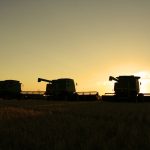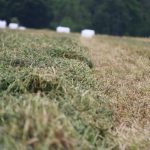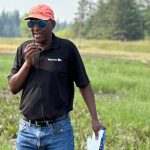“May the odds be forever in your favour” is a memorable quote from the The Hunger Games, a popular book trilogy later made into movies.
Although it is voiced as a cheery sendoff into competition, the irony is that the child protagonists face unspeakably cruel odds, pitted against one another in a fight-to-the-finish match from which only one can emerge victorious. Without being too much of a spoiler, the main characters win, not by following the rules, but by changing the game.
It would appear that similar odds are in play this year in Manitoba, as farmers whose livelihoods are threatened by excess moisture and multiple flood events are caught in a waiting game — waiting to see if governments determine whether their losses qualify for additional assistance under AgriRecovery.
Read Also

Farmer gift idea: How about a weather station?
The 2025 holiday season is looming, and a home weather station might make a great Christmas gift for farmers
We recall back in the days when the federal and provincial governments were negotiating the current suite of farm support programs, that some noted the nuance between “programs” and “frameworks.”
AgriStability, AgriInvest, AgriInsurance are programs. “AgriRecovery is not a program,” the AAFC website says. “It is a framework which forms the basis by which federal, provincial and territorial governments work together to assess the impacts of disasters on agricultural producers and respond with joint initiatives where there is need for assistance beyond what is available through existing programs.”
While federal and provincial governments have not specifically ruled out an AgriRecovery response to the 2014 floods — the plural is significant here — officials haven’t shown much enthusiasm for initiating the assessment process.
Farm leaders in Manitoba and Saskatchewan are notably pessimistic. Looking at the AgriRecovery Assessment Flow Chart on the AFFC website, it’s easy to see why. There are three preliminary assessment questions: whether the disaster event is a recurring event, whether it is abnormal and whether there are extraordinary costs necessary for recovery. If the answers to those questions are negative, there is no basis for AgriRecovery.
Flooding has become an annual disaster for farmers in many areas, due to a combination of heavy rainfall and excess water coming from someplace else.
Extreme weather has also become the norm. Cloudbursts have proven capable of dumping overwhelming amounts of water within a short period. But it doesn’t do it to everyone, only select pockets. Another criteria for AgriRecovery is whether the disaster was experienced collectively. While some areas of the province appear to be singled out for repeated events, there is no predictable pattern in play.
Absolutely, there are extraordinary costs for recovery, but it doesn’t appear repeated disasters are what AgriRecovery is there to address.
As for existing programs, AgriStability was adjusted in 2012 to require a 30 per cent drop in margin, down from 15 per cent, in order to qualify for a payment. As well, payouts are now based on the lower of a producer’s reference margin or allowable expenses. In short, it’s harder to trigger and the farmer will receive less, much less, than under the previous program.
An accounting analysis commissioned by Keystone Agricultural Producers, based on two producers’ actual records, found payouts based on 2011 would be reduced by half under the new rules.
Coverage under both AgriStability and AgriInsurance ratchets downward with repeated claims, so unless affected farmers have socked funds away in AgriInvest, which is difficult to do when your land is under water, those who are in the creek don’t have a lifeline, much less a paddle.
Farmers pay good money into these “insurance” programs, never anticipating they would be calling upon them repeatedly through no individual fault of their own. They can’t control the weather, nor can they control how people upstream dispose of their excess water. For politicians to suggest that existing programs are somehow adequate for the current circumstances hundreds of Manitoba farmers find themselves facing is a cop-out that will drive more people from the land and further erode the viability of rural communities.
Perhaps these programs aren’t the right tool for addressing these issues, but government has a role and responsibility, just as it did back in the days when a vast region of the Canadian Prairies was on the verge of becoming a desert.
The reality that the gently rolling countryside of western Manitoba now experiences flash flooding after a heavy rainfall event, suggests we now have a broad geographical base that has lost its natural resiliency to weather extremes.
We’d like to be proven wrong, but the odds aren’t in favour of an AgriRecovery program for Manitoba farmers this year. Their survival will be based on whether they can change how they play the farming game.
















